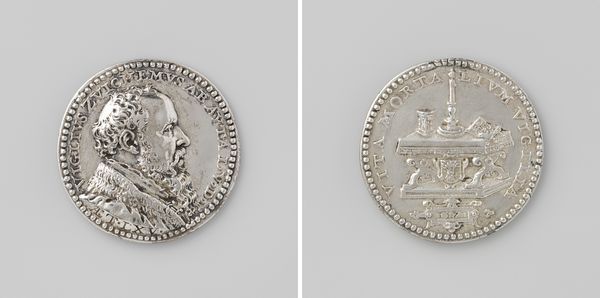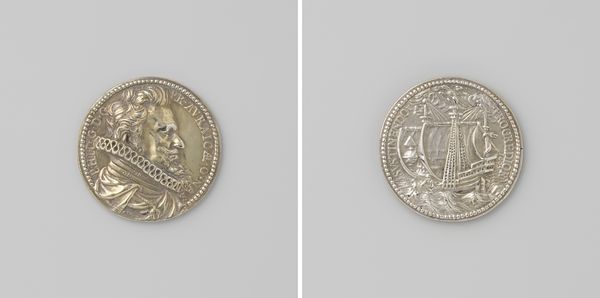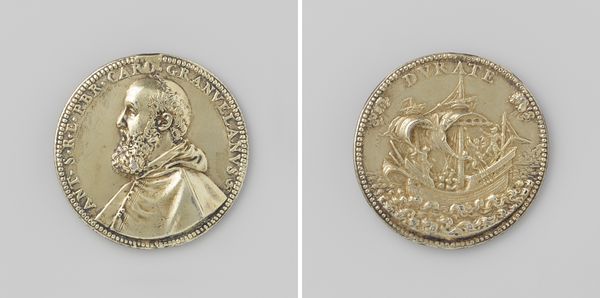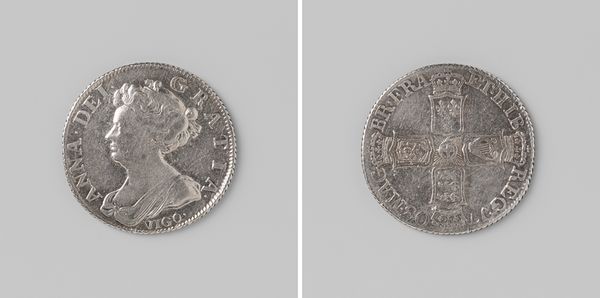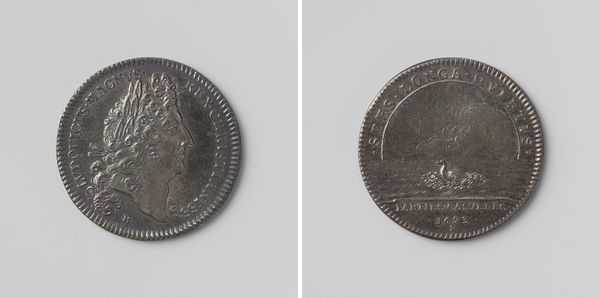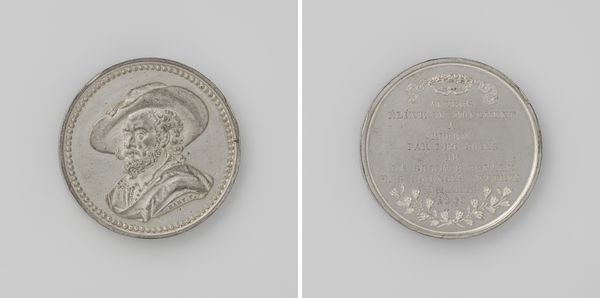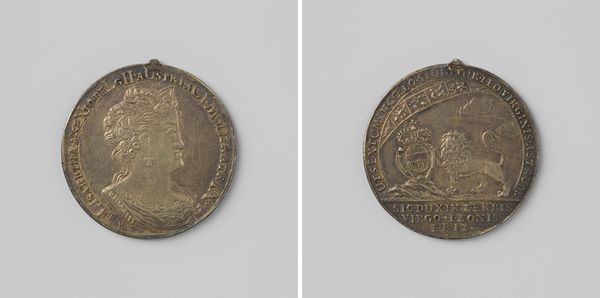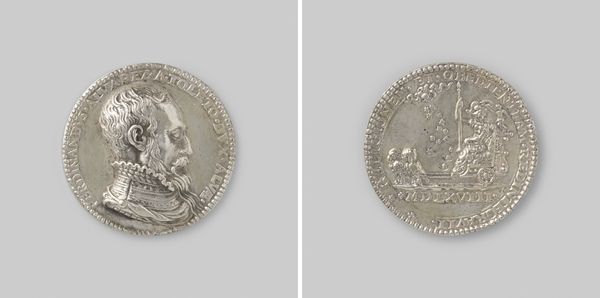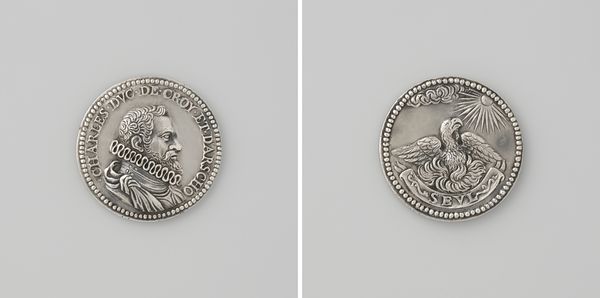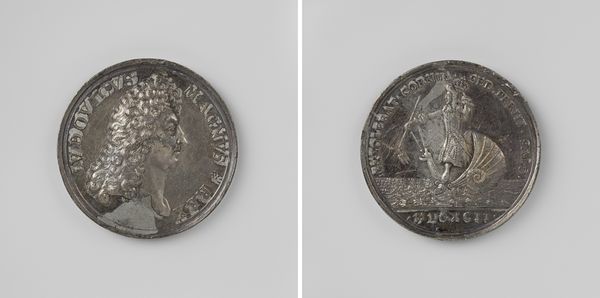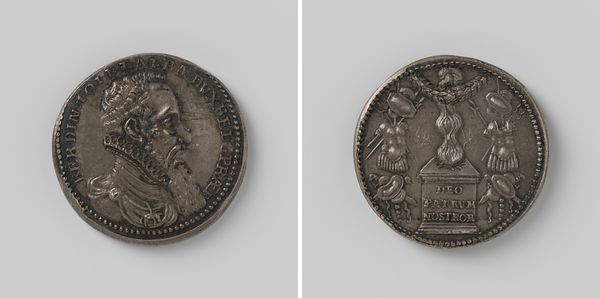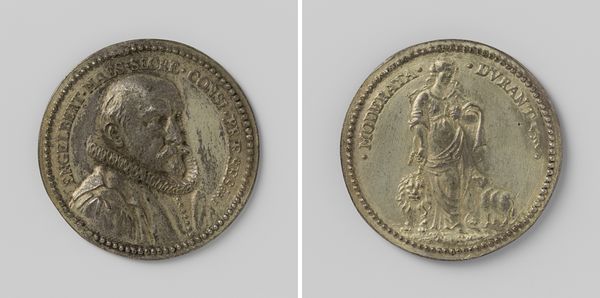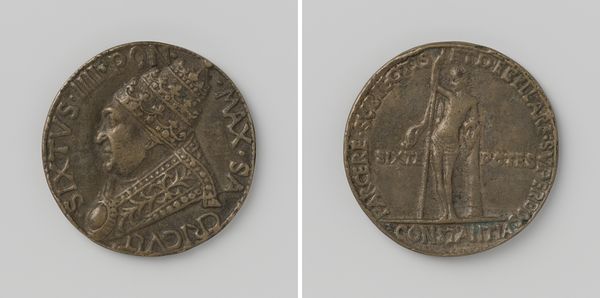
silver, metal, relief, sculpture
#
portrait
#
medieval
#
silver
#
metal
#
relief
#
11_renaissance
#
sculpture
#
history-painting
Dimensions: diameter 2.8 cm, weight 7.33 gr
Copyright: Rijks Museum: Open Domain
Curator: Immediately striking, isn’t it? This is "Alberik, graaf van Lodron, generaal van Karel V en Filips II," a silver relief sculpture dating back to 1567, crafted by Jacques Jonghelinck. The detail is impressive. Editor: It certainly is! There's a stoic rigidity about the man's profile that really conveys a sense of power. Is this linked to specific socio-political contexts? Curator: Absolutely. Jonghelinck was master of the mint in Brussels; his production of commemorative medals spoke directly to courtly tastes and requirements. Medals like these were luxury items that promoted individual renown, noble lineage, and Imperial allegiance across Europe. Editor: And who was Alberik van Lodron? Understanding his place within the structure of the Holy Roman Empire might shed light on the symbolism. Curator: Alberik served as a general under both Charles V and Phillip II. Notice the back of the medal depicts a gauntlet holding a sword, alongside a scroll reading “STET. TANDEM." This roughly translates to "It stands, finally." These kinds of mottos were often selected for their association with important political, military, or personal events. Editor: This symbol of a raised gauntlet is so fascinating when contextualized. One imagines it acting as propaganda. Given the era's power struggles and constant upheaval, how did these physical objects function? Curator: Well, crafted from precious materials, objects like this solidified social standing. A general's identity broadcast across Europe in intricately rendered metal. Consider the process—a mold, careful pouring of heated silver. It's a very tactile experience, emphasizing status in both ownership and production. Editor: You are right. The physical reality really emphasizes an intersection of the tactile, the political, and also this symbolic notion of power embodied and made transferable through art. What I appreciate most is that, by recognizing both the materials and the artistic labor inherent in its creation, we come closer to a fuller grasp of the subject it tries to represent. Curator: Absolutely, and in understanding the artistry and function we reveal much about Renaissance material culture as well as the socio-historical structures that produced it.
Comments
No comments
Be the first to comment and join the conversation on the ultimate creative platform.
